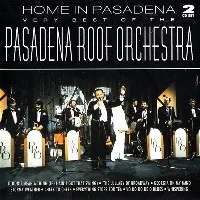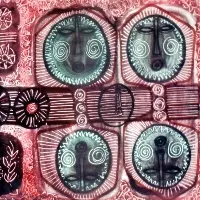Styles: Big Band, Swing, Vocals
Year: 1996
File: MP3@320K/s
Time: 74:38
Size: 171,5 MB
Art: Front
(3:04) 1. Home In Pasadena
(4:12) 2. Singing In The Rain
(3:26) 3. The Lullaby Of Broadway
(2:55) 4. Charleston
(3:37) 5. Creole Love Call
(2:58) 6. It Don't Mean A Thing
(3:22) 7. As Time Goes By
(2:29) 8. Eccentric
(4:53) 9. Georgia On My Mind
(3:27) 10. Dream A Little Dream Of Me
(3:00) 11. Good News
(2:41) 12. Sugarfoot Stomp
(4:42) 13. The Mooche
(3:26) 14. What Is This Thing Called Love
(2:53) 15. Soft Shoe Shuffle Blues
(3:00) 16. Three Little Words
(2:48) 17. Cheek To Cheek
(3:34) 18. I Won't Dance
(4:05) 19. You've Got Me Crying Again
(3:11) 20. I Told Every Little Star
(3:33) 21. Honey Pie
(3:14) 22. I'll See You Again
Album: Disc 2
Time: 74:42
Size: 179,0 MB
(2:18) 1. The Teddy Bears' Picnic
(2:40) 2. Sunday
(4:01) 3. Isn't It Romantic
(5:23) 4. Stormy Weather
(2:16) 5. Everything Stops For Tea
(2:55) 6. Choo Choo
(3:03) 7. My Canary Has Circles Under His Eyes
(3:12) 8. Nagasaki
(3:12) 9. That's My Weakness Now
(2:57) 10. Sing, Sing, Sing
(3:57) 11. Whispering
(4:04) 12. Skokiaan
(2:47) 13. Vo Do Do De O Blues
(4:00) 14. The Show Must Go On
(3:05) 15. The Varsity Drag
(3:28) 16. The Duke Steps Out
(3:13) 17. She's A Latin From Manhattan
(3:03) 18. Hey Miss Moonlight
(3:56) 19. Love In Bloom
(3:09) 20. Me And Jane In A Plane
(2:17) 21. Paddlin' Madelin' Home
(3:07) 22. Holding Hands
(2:27) 23. Here's To The Next Time
The British Jazz Age revivalists of the Pasadena Roof Orchestra present the range of their talent on this 45-track, two-CD compilation. Nominally, the PRO is a re-creation of a 1920s society dance band in the manner of those of popular bandleaders of the time such as Paul Whiteman and Ben Selvin. But over the course of many records, the group has expanded its perspective somewhat, to take in other music of the ‘20s and early ‘30s, including hotter jazz groups like Duke Ellington's Jungle Band as well as Broadway show tunes and movie songs. Still, they tend to play them at what, in the '20s, was known as foxtrot tempo, so that, for instance, "Singing in the Rain" bounces along quickly, as it did when it was first performed, not when Gene Kelly danced to it in the movie of the same name in the ‘50s.
Among these selections, the PRO occasionally crosses the time and style barrier of the Swing Era that began in the mid-‘30s, even to the point of performing the Benny Goodman barnburner "Sing Sing Sing" and presenting "As Time Goes By" in an arrangement reminiscent of the way it sounds in the ‘40s film Casablanca. In fact, the group time travels farther forward, incorporating the Beatles' "Honey Pie," which is at least a ‘20s pastiche number even if it has a 1968 copyright, and Queen's "The Show Must Go On." The orchestra plays the material straight, if with a distinctly British feel, particularly in the vocals, despite much of the music having an American origin. This makes for occasional oddities, none odder than the singer on the novelty "Paddlin' Madelin' Home," who not only cannot bring himself to drop that "g" in "paddlin'," but then adds another to preserve the rhyme, actually singing, "paddling Mad'ling home"! But that may only show that the PRO does have a sense of humor about its music after all.~ William Ruhlmann https://www.allmusic.com/album/home-in-pasadena-very-best-of-the-pasadena-roof-orchestra-mw0000742346
Among these selections, the PRO occasionally crosses the time and style barrier of the Swing Era that began in the mid-‘30s, even to the point of performing the Benny Goodman barnburner "Sing Sing Sing" and presenting "As Time Goes By" in an arrangement reminiscent of the way it sounds in the ‘40s film Casablanca. In fact, the group time travels farther forward, incorporating the Beatles' "Honey Pie," which is at least a ‘20s pastiche number even if it has a 1968 copyright, and Queen's "The Show Must Go On." The orchestra plays the material straight, if with a distinctly British feel, particularly in the vocals, despite much of the music having an American origin. This makes for occasional oddities, none odder than the singer on the novelty "Paddlin' Madelin' Home," who not only cannot bring himself to drop that "g" in "paddlin'," but then adds another to preserve the rhyme, actually singing, "paddling Mad'ling home"! But that may only show that the PRO does have a sense of humor about its music after all.~ William Ruhlmann https://www.allmusic.com/album/home-in-pasadena-very-best-of-the-pasadena-roof-orchestra-mw0000742346
The Very Best Of Disc 1, Disc 2


